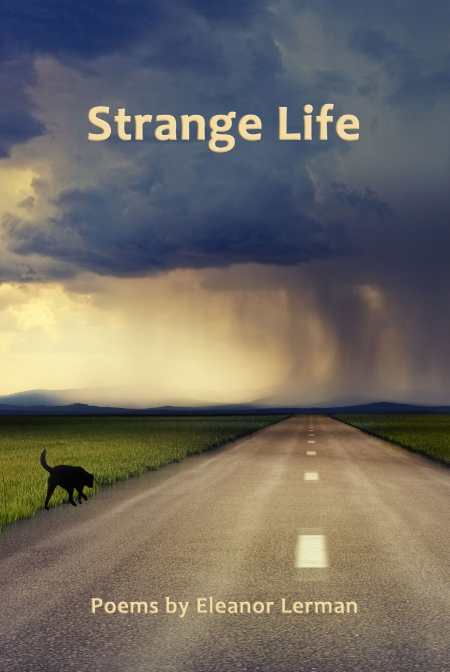
Strange Life
The poems in Strange Life are constructed with terrible and forthright beauty, both existential and hauntingly specific.
From Eleanor Lerman (The Sensual World Re-Emerges, 2011), a National Book Award-nominated poet and Guggenheim fellow, comes a stunning new collection of poetry. Intertwining near-apocalyptic landscapes with language both hopeful and sparing, Lerman’s ungentle, raw lines present compelling intellectual and emotional challenges.
Across three subsections, Lerman’s poems tackle subjects both existential and hauntingly specific, sometimes managing to inhabit both domains at once. The title poem is a revealing introduction, and straddles the line between the dream and waking worlds: “there’s music playing somewhere…the air is heavy…the color of everything [is] in the blue hour.” In a move that proves stylistically consistent, Lerman avoids end punctuation, affording her work a pronounced openness that invites reader participation.
“Gray Horses in a Green Landscape” continues the themes introduced in Strange Life, which often flirt with W.B. Yeats’s notion of eternal return. Some of the imagery is oblique, as with “human faces dismantled” to describe an uninhabited string of houses. Other expressions prove more vividly accessible, as with “desire…sinks its teeth…whispers that now, it aches for no one’s body; now it has no need to sleep” in the same poem. Such clarity of vision is both disconcerting and provocative.
Throughout Lerman’s poems, stark and involving presentations reign; far less common are the awkward constructions that threaten to lead strong pieces astray. Lerman does, however, make too frequent use of explanatory lines, like “in other words,” which appears more than once, and of parentheticals. Her lines prove strongest where left undissected by surrounding material.
Poems throughout demonstrate the author’s wide familiarity with religious concepts far beyond monotheism’s borders, and even recondite ideas ensnare the imagination beneath her able pen. Some, like “Bring Us the Last Nagual,” flirt with pagan ideas beautifully, allowing dark beasts to skulk with human awareness into modernity. “No one will be able to look us in the eye,” the poem intones, both self-aware and bleak. “The Nature and Attributes of God” also explores uncommon spirituality, remembering:
we brushed the speechless dust of the ashram
from our feet. The bloody sun
plunged into the rice field at the
end of the world, and it seemed
to mean something
The piece ultimately concludes that “it doesn’t matter that no one knows why.” Surface brutality is shaken by introspection. Lerman warns that, as her characters look down the road and wonder, someday so will we all.
Lerman’s verses occupy a universe both fragile and terrible, the elements of which are both beyond our control and continually at our mercy. Her poetry is frightening and inspiring, and will push readers to the edge of revelation only to make them comforting promises as they teeter at the edge: “if you stand at the window long enough, you can watch the bad hours peel themselves back from the horizon and fly away.” The poems in Strange Life are constructed with terrible and forthright beauty, and its crumbling roads leading into the austere, promising unknown are well worth traveling.
Reviewed by
Michelle Anne Schingler
Disclosure: This article is not an endorsement, but a review. The publisher of this book provided free copies of the book and paid a small fee to have their book reviewed by a professional reviewer. Foreword Reviews and Clarion Reviews make no guarantee that the publisher will receive a positive review. Foreword Magazine, Inc. is disclosing this in accordance with the Federal Trade Commission’s 16 CFR, Part 255.
